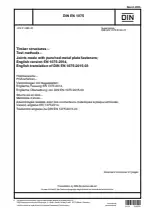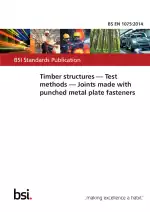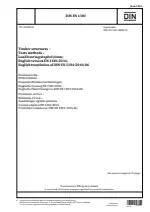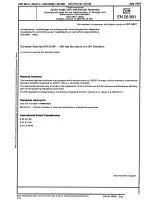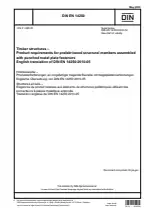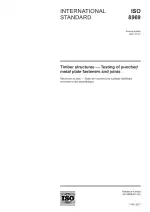Timber Structures - Test Methods - Joints Made with Punched Metal Plate Fasteners
Also Known As:
The DIN EN 1075 standard provides test methods for evaluating the strength capacity and stiffness of joints made with punched metal plate fasteners in load-bearing timber structures. These joints are used to connect two or more pieces of timber with the same thickness in the same plane. The standard focuses on measuring various properties of the joints, including the load-slip characteristics and maximum load resulting from the lateral resistance of the embedded projections.
The tests conducted under this standard involve evaluating the joint performance at different angles between the direction of the applied force and the axis of the fastener (load-fastener angle a) as well as the direction of the timber grain (load-grain angle ß). Additionally, the tension capacity, compression capacity, and shear capacity of the fastener are measured at various angles. The standard also includes a nail root test method, which is detailed in Annex A.
| Descriptors | Compressive strength, Connections, Construction, Definitions, Fasteners, Joints, Load capacity, Materials, Mechanical testing, Nail plates, Nails, Plates, Shear strength, Stiffness, Structural timber, Tensile strength, Test specimens, Testing, Timber construction, Timber joints, Timber structures, Panels, Tiles, Junctions, Boards, Planks, Compounds, Sheets |
| ICS Codes | 91.080.20 - Timber structures |
| Language(s) | English |
| File Size | 4.1 MB |

